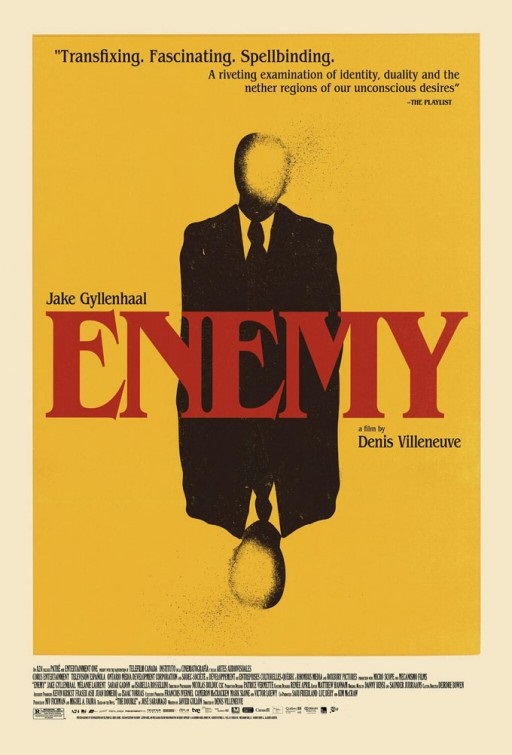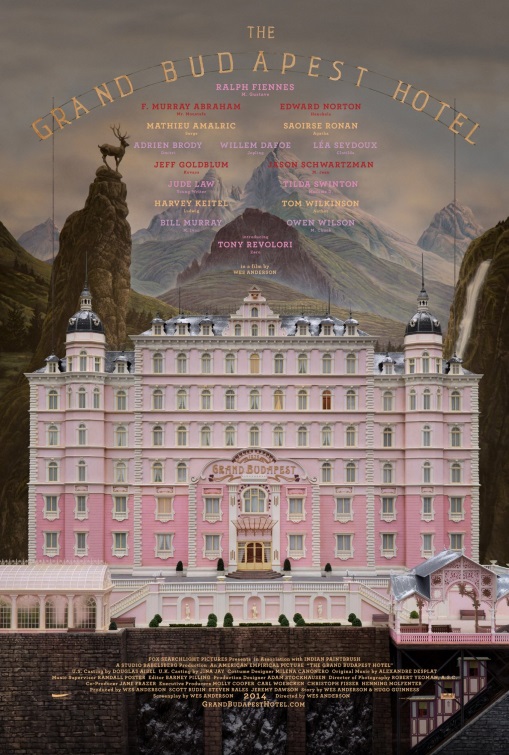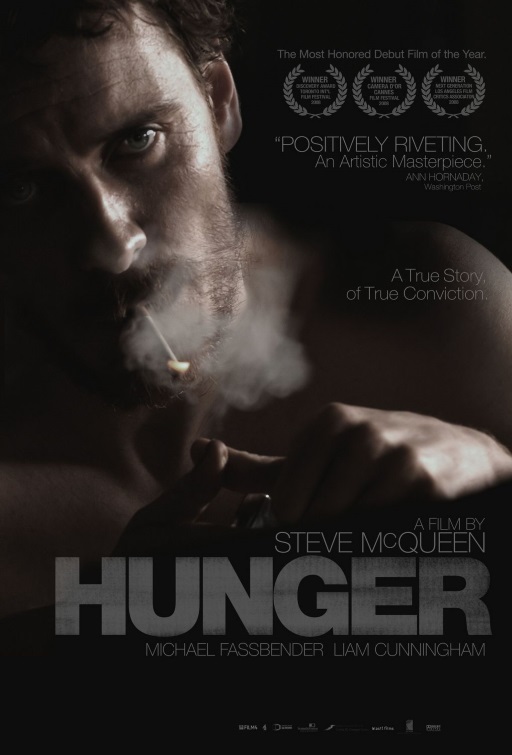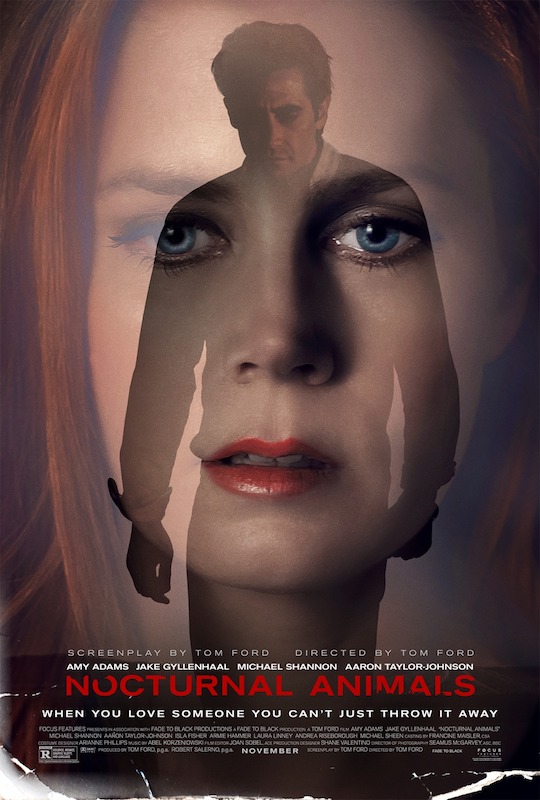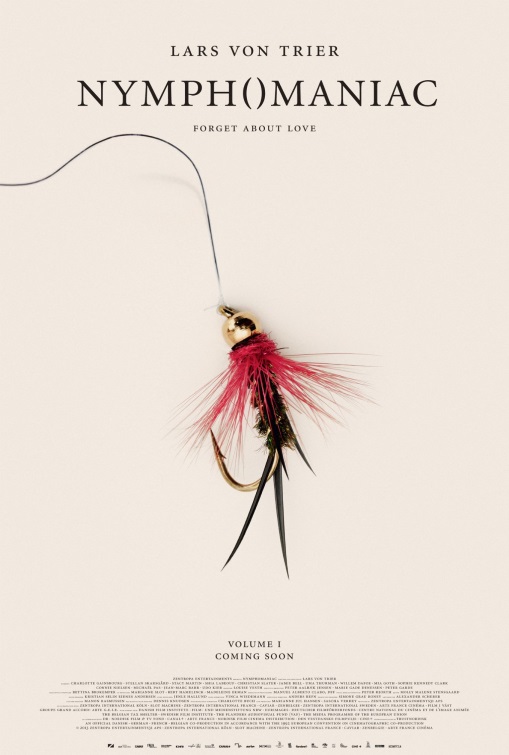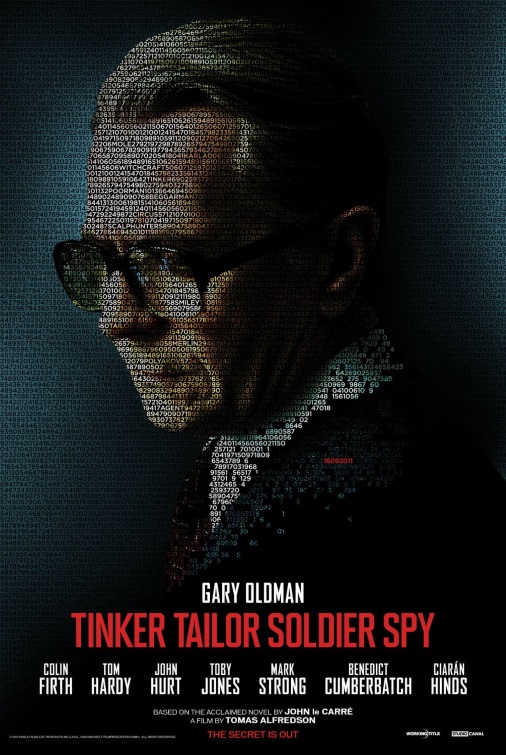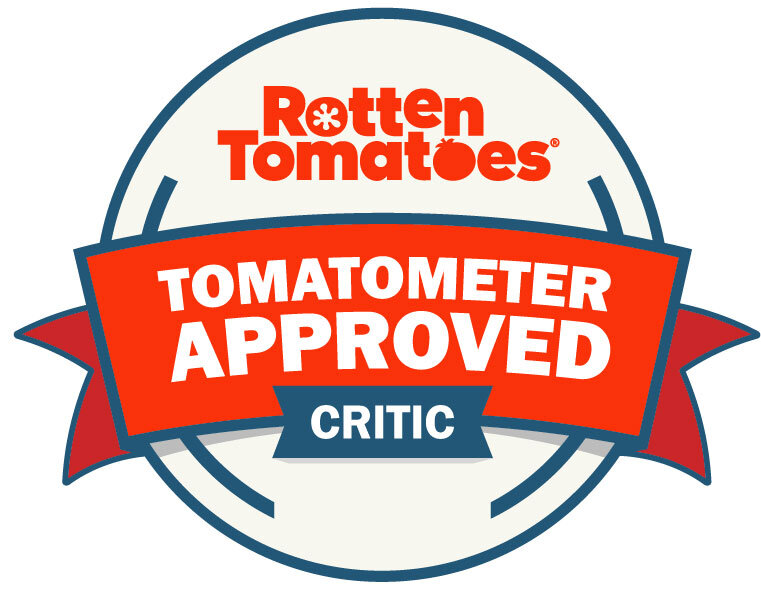[Note: This post contains spoilers. Updated 11/19/15.]
As a general rule, my approach to criticism is textual. My preference is to engage with films primarily as standalone objects, with some measured acknowledgement of both cinematic history and the broader political and cultural context in which those objects exist. Only very rarely do I address the work of other critics. This constraint serves two purposes. First, it maintains my writing’s focus on its raison d'être—the study of cinema—and thereby prevents it from drifting into the arcane back alleys of meta-criticism. Second, it keeps things professional. Too often, in my experience, critical conversations rapidly degenerate into condescending snark, sophomoric name calling, and spiteful assaults on individuals’ character and motives. Most of the time, I have no interest in getting drawn into such knife fights. This is partly because they are a distraction from genuine analysis, and partly because life is short and unpleasant enough as it is.
The above is presented to emphasize the unusual nature of the this post, which is a direct rebuttal to the work of a fellow critic. The piece in question is British writer Mike McCahill’s brief but scornful review of Avengers: Age of Ultron. This post isn't an attempt to punch down at an obscure blogger: McCahill writes for The Scotsman, The Telegraph, and The Guardian, so he's clearly doing something correctly. I'm not offering a blanket condemnation of the man's work. Nor am I making a sweeping endorsement of the Avengers sequel, a film to which my initial reaction was generally lukewarm. However, McCahill’s review almost perfectly embodies the sort of smug, exasperating, and wrong-headed arguments that have been widely leveled against Age of Ultron, and against superhero action features generally. Moreover, his succinct candor regarding what he finds so repellant about the film makes the piece a convenient specimen for dissection.
The trouble with these Avengers get-togethers, it transpires, is not just that they’re too big to fail, but that they’re almost certainly too big to function as drama. Swallowing up every last character, actor, and dollar, the franchise has thus far manifested itself as the lumbering ne plus ultra of modern movie gigantism …
Straight away, here’s an example of the logical chicanery that McCahill will rely on again and again: the use of a clever turn of phrase to mask a sweeping generalization or transparently false claim. Describing any film as “too big to fail”—apparently on the basis of a mammoth cast and budget—requires that one ignore the numerous box office flops that Hollywood inevitably churns out. This isn’t ancient cinematic history: Even when adjusted for inflation, two of the biggest bombs of all time were released just a couple of years ago: 47 Ronin ($151 million in the hole) and The Lone Ranger (at least $95 million). It's one thing to predict that a summer tentpole film is going to make a lot of money, especially on its opening weekend. In my own review, I observed that “[l]egions of film-goers are going to see Ultron, no matter what its virtues, flaws, or […] ethics as a work of cinema.” It's quite another thing to assert that a mega-budget feature is guaranteed to turn a profit.
“Too big to function as drama” is a murkier concept, given that dramatic success is a subjective matter. However, if one assumes that settled critical consensus can be a quick-and-dirty proxy for such success, neither a big budget nor a big cast would seem to disqualify a film from achieving quality drama. The most expensive inflation-adjusted film productions tend to skew mixed in their critical reception, but high points abound: Titanic ($294 million, 88% on Rotten Tomatoes), Tangled ($281 million, 90%), Harry Potter and the Half-Blood Prince ($275 million, 84%), Avatar ($261 million, 83%) Spider-Man 2 ($250 million, 94%), and The Dark Knight Rises ($236 million, 87%). It’s possible that McCahill would characterize all the aforementioned films as dramatic failures, but he doesn’t bother. He just asserts that expensive films can’t function as drama, full stop. And if the drama-defeating gigantism in question refers to an outsized cast, the claim is so flimsy that it can’t withstand a moment’s reflection. (Pulp Fiction? JFK? Magnolia? Do the Right Thing? Nashville? The Thin Red Line?)
The “trouble” with the Avengers films in McCahill’s estimation, then, is that they are big and therefore incapable of flopping at the box office or succeeding as works of dramatic fiction, despite the fact that there are abundant examples of big films doing both. Perhaps Avengers: Age of Ultron is an illustrative exception, but McCahill doesn’t make that case. He simply equates bigness with profit and artistic brokenness.
… [W]hile the Avengers themselves—the hall of superhero fame headed by Robert Downey Jr.’s Iron Man and Mark Ruffalo’s Hulk—remain the safest of bets, covering so many eventualities that their triumph is all but assured.
This sort of forest-for-the-trees kvetching is a warning sign that McCahill’s critiques don’t actually engage with the Avengers films—or, by extension, with the superhero subgenre in general—save in the most offhanded, inattentive manner. His complaint seems to be that because the Avengers boast such a diverse array of super powers, they will always emerge victorious from any crisis, and, as a result, the films have no real stakes. This claim is so misguided regarding how genre films function, it’s hard to know what to make of it.
Sure, if they operated together in perfect harmony and utilized their abilities in seamless coordination, the Avengers could arguably overcome almost any obstacle. They don’t, however. This is because while some of them are godlike, they’re all fallible beings brimming with ego, anger, and fear. This isn’t some incidental stumbling block: It's the ultimate conflict at the heart of the Avengers films! A just-the-facts plot summary of Avengers or Avengers: Age of Ultron would describe Loki’s or Ultron’s schemes for global domination, respectively, and what the team does to foil those plans. Those proximal conflicts, however, don’t really describe the stories that the films are telling, any more than Cries and Whispers can be summed up as “a women dies of cancer”.
The “solo” films of the Marvel Cinematic Universe (MCU) revolve around internal conflicts: Tony Stark’s blindness to the physical and personal devastation he leaves in his wake; Thor’s puffed-up sense of royal entitlement; Steve Rogers’ confusion when the moral order of his world collapses. The Avengers films, meanwhile, are about a team, and accordingly center on inter-personal conflicts. To say that the group’s triumph is “assured” is to willfully ignore significant chunks of dialog in both films, which repeatedly return to the possible dissolution of the heroes' coalition. (Granted, triumph is assured in the sense that the Good Guys almost always win in Hollywood genre films, but the same could be said of Star Wars, Lord of the Rings, or any tale of adventure, irrespective of how mighty or feeble the heroes might be.)
None of this is exactly obscure: The main question that hangs over the first Avengers is whether Nick Fury’s crazy-quilt assemblage of soldiers, aliens, and science experiments can actually work, given the personalities and powers involved. Can narcissists like Stark and Thor tolerate the command of a squeaky-clean Boy Scout like Rogers? Can the Hulk’s wrath be controlled in such a way that he does more good than harm? Do elite but human heroes like Natasha and Barton even have a place alongside such gods and monsters? Avengers answered such queries with a tentative “Yes,” but Age of Ultron poses the inevitable follow-up questions: For how long? And to what end?
In pre-release interviews, writer-director Joss Whedon has cited this sequel as the hardest work he's ever done, and you can bet most of that toil went on finding an antagonist capable of making any fight seem fair enough for an audience to reasonably cheer. Here, he's settled on Ultron, which may sound like a brand of dishwasher tablets, but is actually an artificial intelligence (voiced by James Spader) with an army of robots at his disposal.
A super group as powerful as the Avengers naturally need a worthy foe, but McCahill's characterization of Ultron's development is just lazy and flat-out ahistorical. It's fine to beg ignorance regarding the minutiae of Marvel's impossibly dense comic mythology, which requires an almost Talmudic rigor to untangle. However, making a blithe assumption that is easily refuted with ten seconds of Googling is just critical malpractice. Ultron did not spring from Joss Whedon's skull like some fully-formed CGI Athena. He's a well-established character who has spent almost five decades antagonizing the Avengers in the pages of Marvel's comics. His origin and characteristics were revised for the MCU, but Whedon didn't have to “toil” to devise him: Ultron is consistently regarded as one of (if not the) most powerful and durable of the Avengers' nemeses. One could cynically argue that this is exact reason Marvel is regarded as such a valuable creative property: It has a ridiculously deep bench of existing characters with detailed histories, providing easy fodder for screenwriters to churn out countless sequels and spinoffs.
It's superheroes versus supercomputer, then; of human interest, there is-little-to-nothing.
Let’s set aside that fact that Ultron's scheme is to wipe out all organic life on Earth through an artificial meteor strike, and the outcome is therefore somewhat significant to ordinary humans, even if they aren’t participating directly in the conflict. This remarkable assertion—that there is “little-to-nothing” of interest in a story with no mundane human principals—would seem to brand significant swaths of the fantasy and science fiction genres as enormous wastes of time. Is McCahill actually contending that a story about non-human vs. non-human conflict is by definition boring? What about when it’s a time-traveling murder-bot opposed by another time-traveling murder-bot? Mermaid vs. sea witch? Cyborg vs. distributed artificial intelligence? Mouse vs. rat? Gelfling vs. Skeksis? Immortal vs. Immortal? Robot worker vs. sentient spaceship? Lion vs. lion? Android vs. his own sense of inadequacy?
This is Genre Storytelling 101: Non-human characters serve as stand-ins for human desires, fears, and anxieties. Perhaps McCahill doesn’t find the struggle in Age of Ultron particularly compelling for reasons that are specific to that film. That’s not what he states, though: He asserts that because the conflict concerns superheroes fighting an artificial intelligence, it is therefore of no interest. At this point, any fantasy or science fiction fan could be excused for giving McCahill’s review the finger and walking away.
This tussle sends more computer-generated masonry flying than ever, which is an achievement of sorts, but the expensive kit and relentless set-pieces mask a playground-level goodies-vs.-baddies runaround.
Age of Ultron is certainly stuffed chock-full of sound and fury, but to characterize its clashes as "playground-level" is off the mark, betraying a distressing negligence towards what is actually presented on screen. Almost all superhero stories begin with a straightforward delineation between the heroes and villains. The villains are doing bad things—usually for reasons that make perfect sense in their own minds—and the heroes are trying to stop them. If this is bothersome to you, you should probably just stop watching action-oriented genre cinema altogether, because these sharp distinctions are an essential starting point for such films.
However, unless the discussion is limited to fare created for toddlers, almost every superhero tale these days grapples at some point with the fact that, costuming aside, it can be difficult to distinguish heroes from villains in a complex world. The heroes themselves inevitably fall victim to doubts about whether they’re doing the right thing for the right reasons, or whether they still want to do the right thing. The point highlighted above stands: Although providing spectacle is one of the functions of superhero tales, fisticuffs and explosions aren’t what such stories are about. Moral fission and self-reflection have been the norm in superhero films for some time, just as they’ve been the norm in superhero comics for decades. Writers aren’t stupid: Leaving things at the smash-bang-zap “playground-level” gets tedious pretty quickly. McCahill is complaining about something that hasn’t been a significant factor since the gee-whiz Golden Age of comics—and arguably not even then, where gray-area vigilante characters like Batman and the Spirit were concerned.
Granted, there’s a problem with Age of Ultron’s action, but it’s one of essence and execution. One of the ever-more-conspicuous weaknesses of the MCU features is their reliance on a bland, pre-fab pacing model that requires a violent climax roughly every fifteen to twenty minutes. Regarding Avengers and Avengers: Age of Ultron specifically, one of my main objections to these crossover films is that the action sequences, while serviceable, are unimaginative and unworthy of an alleged assemblage of “Earth’s mightiest heroes.” There’s something backwards when the most outrageous stunts and jaw-dropping exploits are unfolding in a film two screens down the hall at the multiplex, a movie in which everyone is human and the villain’s motive is good old-fashioned revenge. If your film's character roster includes Captain America, Iron Man, Hulk, Thor, Black Widow, Hawkeye, Vision, Scarlet Witch, Quicksilver, and Ultron, you damn well better do something extraordinary with your action sequences, something that no other film has done before.
Proper actors are brought in to bolster the beef/cheesecake, yet the two-second appearance of arthouse muse Julie Delpy doing nothing is both a jolting incongruity and a suggestion that all resistance to this behemoth cinema might be futile. They can’t claim the script attracted them: Whedon’s drama is banal, his wisecracks composed of deadening snark.
First of all, on behalf of Scarlet Johansson, Chris Evans, Chris Hemsworth, and any other cast members who qualify as beef/cheesecake in McCahill’s estimation: Fuck you. Seriously. “Proper actors”?
I actually agree with McCahill’s assessment of Age of Ultron’s witticisms: The quips are just not as funny as they were in Avengers, and many of them often land with a pained thud that’s wholly uncharacteristic of Whedon’s usual work. Reasonable people can differ on whether the inter-personal Avenger-on-Avenger struggles—or Ultron’s serious daddy issues—are “banal” or not, but at least here McCahill isn’t suggesting that the characters are intrinsically uninteresting just because they’re super-powered.
The sticking point in this passage is the implication that there can’t be any legitimate reason for Julie Delpy’s brief appearance as Black Widow Ops headmistress Madame B other than surrender to the Marvel machine. In Age of Ultron—and in MCU television series Agent Carter, but let’s stick to the film—it’s established that the Black Widow Ops program once educated select Russian girls in the arts of spycraft and assassination, all under the guise of ballet instruction. Sublimation of the girls' individual desires and morals to the program’s rigorous training were paramount, to the point that “graduation” from the project’s Red Room consisted of forced sterilization (the better to avoid future emotional entanglements).
The choice of Delpy for this blink-and-you'll-miss-it role—and recall that a fleeting presence in the MCU is practically a guarantee of future, meatier appearances—evokes intriguing associations based on her prior work. One of Delpy’s most prominent early roles was in Agnieszka Holland’s epic Eastern European WWII drama Europa Europa. In that film, the actress played an ardent Nazi determined to give up her unborn child to the SS’s notorious Lebensborn program, through which it would be raised in a pure Aryan household. More recently, Delpy directed and starred in The Countess, dramatizing the life of Hungarian noblewoman and serial killer Elizabeth Báthory. The film depicts Báthory’s young life as bleak and cruel, culminating in her unintended teen pregnancy, her lover’s gruesome execution, and the vanishing of the child. Later, Báthory develops a delusion that bathing in the blood of virgin girls will give her eternal youth, and to that end commands her retainers to kidnap and murder countless victims.
The relevance of these meta-textual correspondences to the Black Widow Ops program should be obvious, but we needn’t range that far afield. Perhaps something about Delpy’s look just seemed right: a compartmentalized weariness has always seemed to hang on her characters, highlighted by those heavy eyelids and an inevitable snarl of frizzy blonde hair threatening escape. Regardless, why would one assume that there is no artistic rationale for slipping Delpy into a five-second cameo, unless one’s intent is to facilely indict corporate blockbuster filmmaking for… something? Devouring all the “proper” actors, maybe?
By all means claim Age of Ultron as fun, but it looks very much like the kind of fun the suits want you to have—an utterly impersonal, corporate triumph.
This is what’s known as “stating the obvious.” Yes, the experience of watching Age of Ultron is intended to be broadly entertaining, and yes, Marvel and Disney want as many people as possible to watch it, because that will make them truckloads of money via the sale of tickets, DVDs/Blu-rays, merchandise, and so on. And? What does it mean that the film “looks like” capitalist-approved fun? Is there some secret visual signature embedded in the action that betrays it as a corporate diversion? McCahill doesn’t say. Certainly, Age of Ultron is impersonal in the sense that it’s a finely-calibrated corporate product, designed to appeal to as many people as possible, rather than the work of an auteur’s uncompromising vision. This isn’t exactly an original observation. You don’t get critical brownie points for calling attention to the corporate nature of a $280 million film, except perhaps from politically allied readers who lap up such banal statements as if they constituted brave truth-telling.
Watching these logo-simple characters (the starred shield, the arm-and-hammer, the not-so-jolly green giant), I wondered whether we weren’t meant to be cheering for the likes of Marvel, Disney, Google, Apple, and Coca-Cola as they boosted their global market share.
It’s hard to imagine a snarky swipe at the superhero genre more fatuous than one directed at the supposed simplicity of the character designs. When superheroes first rose to popularity in comics’ Golden Age, bold and distinctive visual design utilizing primary colors was a virtue from both an aesthetic and technical viewpoint. (Bear in mind that comics were one of the most cheaply produced printed mediums, and therefore every dot of ink mattered.) Moreover, a stark, simple look for a character is a convenient means of orienting the reader in graphic storytelling. As the eye moves from panel to panel, a bright, distinctive costume—say, Superman’s red-and-blue garb with the stylized “S”—serves as a landmark that makes it easier for the brain to interpolate the action that occurs between the static images. (This is elementary stuff; children understand it intuitively, but an adult like McCahill can always turn to Scott McCloud’s celebrated Understanding Comics.)
In part, the art direction of superhero films is a legacy of the genre’s comic roots, but "logo-simplicity" still has a practical purpose in cinema. A brightly-colored costume or distinguishing device—Captain America's shield or Thor’s hammer, for example—is a handy visual marker even in a moving image, particularly amid the chaos of a super-powered throwdown. (This is one reason I’m increasingly annoyed by the cinematic trend of turning boldly-colored heroes into desaturated blobs of gray.) Moreover, the iconographic function of colors and symbols can have a mythic dimension. As is commonly observed, what are superheroes if not the modern era’s gods and goddesses? Hulk is green for the same reason that Krishna is blue: so you know him when you see him. Complaining that Cap’s shield is “logo-simple” is like lodging the same gripe about Zeus’ thunderbolt, or the Christian cross, for that matter. By definition, a symbol should be easily identifiable; ridiculing it for simplicity is just a tautology.
More broadly, I’m not sure what to make of McCahill’s likening of superheroes to America’s mightiest brands. It feels like an anti-corporate or anti-neocolonial non sequitur rather than an insight. Sure, the Avengers themselves are now corporate symbols in some sense, and their dissemination across the globe on T-shirts, backpacks, and Odin-knows-what does make for a striking illustration of American economic and cultural hegemony. However, equating cheers for the on-screen victory of the Avengers with off-screen economic jingoism is incoherent and kind of insulting. Is the implication that anyone entertained by the Avengers’ triumph over Ultron is, in reality, being subconsciously molded into in unthinking booster for the quarterly corporate “win”? McCahill doesn’t connect the two ideas in any substantive way, but that doesn’t stop him from implicitly casting anyone who is thrilled by super-heroic exploits as a guileless consumer drone.
To an extent, this kind of facetious, scripted commentary masquerading as criticism is galling because there probably is a thought-provoking anti-capitalist dissection of Age of Ultron waiting to be made. A deep Marxist analysis of the film would make for a fascinating read, but that’s not what McCahill presents. He’s just taking hackneyed potshots at an Age of Ultron that exists only in his imagination, while hoping that no one will detect the sleight-of-hand. It’s lazy, it’s boring, and it’s irritating. It’s compelled me to mount a defense of a film I wasn’t that enthusiastic about to begin with, a film that suffers in spots from bad screenwriting, tiresome sexism, uninspired action, and unmistakable executive monkeying. Nonetheless, flawed filmmaking is no excuse for downright shitty criticism.
















